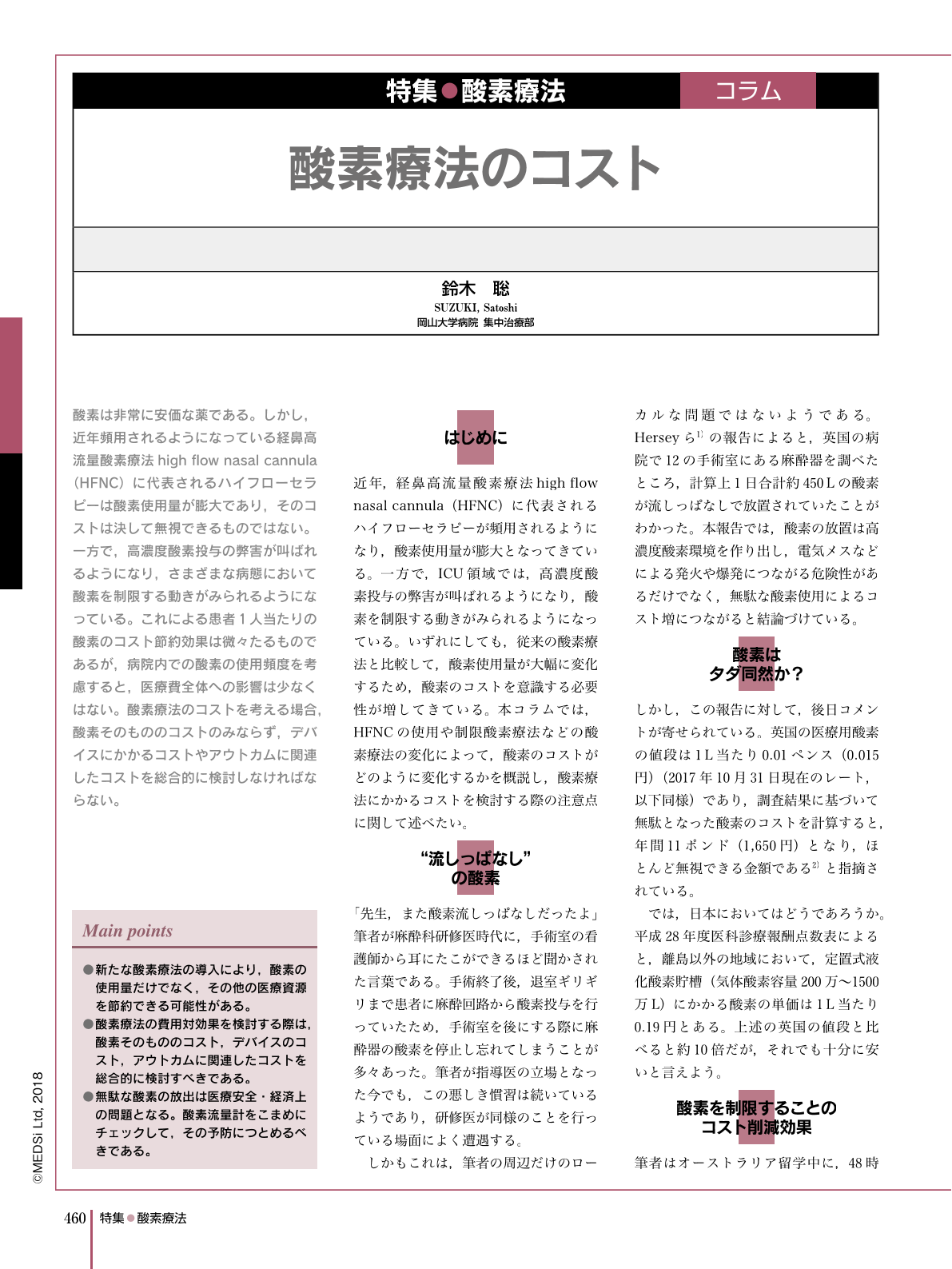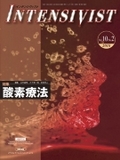Japanese
English
- 有料閲覧
- Abstract 文献概要
- 1ページ目 Look Inside
- 参考文献 Reference
酸素は非常に安価な薬である。しかし,近年頻用されるようになっている経鼻高流量酸素療法high flow nasal cannula(HFNC)に代表されるハイフローセラピーは酸素使用量が膨大であり,そのコストは決して無視できるものではない。一方で,高濃度酸素投与の弊害が叫ばれるようになり,さまざまな病態において酸素を制限する動きがみられるようになっている。これによる患者1人当たりの酸素のコスト節約効果は微々たるものであるが,病院内での酸素の使用頻度を考慮すると,医療費全体への影響は少なくはない。酸素療法のコストを考える場合,酸素そのもののコストのみならず,デバイスにかかるコストやアウトカムに関連したコストを総合的に検討しなければならない。
Main points
●新たな酸素療法の導入により,酸素の使用量だけでなく,その他の医療資源を節約できる可能性がある。
●酸素療法の費用対効果を検討する際は,酸素そのもののコスト,デバイスのコスト,アウトカムに関連したコストを総合的に検討すべきである。
●無駄な酸素の放出は医療安全・経済上の問題となる。酸素流量計をこまめにチェックして,その予防につとめるべきである。
The validity and safety of conservative oxygen therapy has recently been confirmed to avoid the deleterious effects of hyperoxia for patients with a wide range of diseases. Among various devices used for oxygen delivery to patients, indications for high flow nasal cannulas (HFNCs) have been rapidly expanded. For oxygen therapy with HFNCs, however, the costs of oxygen are not negligible due to a significantly higher flow of oxygen required compared with conventional oxygen therapy. Although the costs of oxygen for an individual patient may be insignificant, the burden on hospitals and national healthcare budgets deserves consideration. The cost of oxygen therapy is not limited to the supplied oxygen alone, but includes the costs of devices used for delivery and the patient-oriented costs generated by the therapy.

Copyright © 2018, MEDICAL SCIENCES INTERNATIONAL, LTD. All rights reserved.


